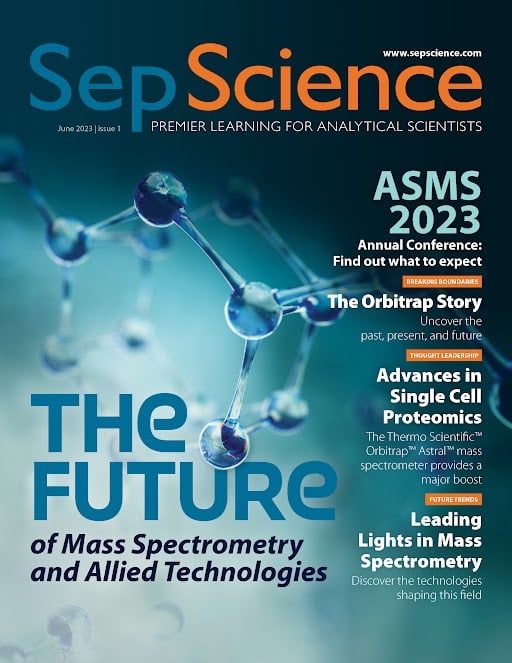Discover the technologies shaping the field of mass spectrometry.

The field of mass spectrometry has undergone a remarkable transformation over the years, with scientists continually leveraging research and technological advancements to push the boundaries of possibility. As we look ahead, it is important to recognize the trailblazing technologies and techniques at the forefront of these advancements.
We asked several mass spectrometry experts to weigh in on the technologies set to have the greatest impact moving forward. They explore some of the leading lights in the field, highlighting not only the ground-breaking work of researchers but also the implications and potential applications of new innovations.
Data Analysis Through Machine Learning
One result of modern advances in mass spectrometry is the creation of vast amounts of data. But unlocking the power of big data requires effective techniques for analysis and interpretation. Erin Baker, a bioanalytical chemist and Associate Professor at the University of North Carolina at Chapel Hill, predicts that machine learning will continue to play an increasingly important role in this area.
"Tasks such as reliably predicting molecules and mechanisms are gradually becoming attainable," says Baker. "By leveraging machine learning to analyze all the data we have available, we expect to find a wealth of novel insights that were once beyond our reach. That is just one reason why it is so important to deposit data and make it available to the scientific community."
Baker also provided her insights into some of the researchers performing pioneering work in this field. "Pieter Dorrestein (University of California, San Diego) is using GNPS, a web-based MS environment, to mine data and discover new molecules. I've been fortunate enough to work with him on a project where we identified new molecules and confirmed that they were components of real biological systems," reveals Baker. "In addition, Gary Siuzdak (Scripps Research Institute) is doing incredible work with his METLIN resource—his group is currently working on an ion mobility spectrometry database housing collision cross sections for 27,000 standards, which is extraordinary."
Fortunately, these exciting advancements are not happening behind closed doors, and part of the magic of the mass spectrometry community is the vast amount of collaboration and data-sharing among novice and experienced users. "Social media has been amazing for helping advance research. For example, using the right hashtags (such as #TeamMassSpec) on Twitter can lead to experts like Peter, Gary, Susan Abbatiello (Waters), Benjamin Neely (National Institute of Standards and Technology), or John Yates (Scripps Research Institute), and many others providing quick responses to questions that might have remained unanswered or taken months to resolve.
Direct Analysis in Real Time (DART)
Open air mass spectrometry is revolutionizing real-time sample analysis, enabling researchers to quickly and efficiently identify substances in various contexts. "Open air mass spectrometry involves introducing and ionizing a sample in the open air," explains David Sparkman, Adjunct Professor of Chemistry at the University of the Pacific. "And one of the leading technologies within that is direct analysis in real time (DART)." He adds that this technique really shines because it puts the word "quick" in the term "quick and dirty."
As an example, Sparkman describes an early use of DART to detect melamine in adulterated pet food. "Melamine is a monomer and is used to adulterate certain food because it has a high nitrogen content," says Sparkman. "It can indicate that you have higher protein content than you actually do." He explains that extracting the melamine from wet pet food samples typically took several days. "We showed that using DART technology, we were able to stick a melting point capillary into a can of dog food, hold it in the interface of the instrument, and instantly determine whether or not melamine was present."
"US customs laboratories use DART instruments regularly," says Sparkman. "These laboratories are charged with determining if certain banned pesticides are present in imported fruits and vegetables. This normally involves an extremely tedious analytical lab testing process, but with DART, you can take a peach out of the crate, hold it in front of the interface, and instantly determine whether or not those pesticides are present." Sparkman adds that another use for this technique is to quickly analyze seized substances to determine whether or not they contain illegal drugs.
With the possibilities DART technology opens up, Sparkman thought that it would take off quickly—but this wasn't the case. He suggests the lack of momentum arose from a combination of insufficient promotion and inadequate technology performance due to incompatibilities with certain mass spectrometer models. That said, he is hopeful that more organizations will realize the potential of this technology and we'll see a renewed interest in the near future.
Ion Spectroscopy
While mass spectrometry instruments have come a long way, Alexander Makarov, Director of Global Research LSMS at Thermo Fisher Scientific, explains that there is still work to be done in certain areas. In particular, he suggests the integration of ion spectroscopy with mass spectrometry is poised to significantly enhance our understanding of molecular structures. "This could just be action spectroscopy or something similar where we could complement mass measurement by structural information," explains Makarov.
"I also see a lot of interesting potential in a completely tangential direction such as the use of mass spectrometry for soft landing of ions, for example, to prepare a sample for cryo-electron microscopy (cryo-EM)," adds Makarov. "You could take a protein complex and perform quality control in an Orbitrap analyzer to check whether you obtain what you expect or if it's already fallen apart. Then, if you have what you expect, you could just select this particular protein complex and deposit it softly on the target." Makarov explains that this way, you know you are transferring intact complexes instead of some dissociated fragments, which can save a significant amount of time.
Makarov also notes that the mass spectrometry landscape lends itself to continued innovation. "There are still a lot of competitors within the industry, each banking on a different technology," explains Makarov. "This makes it exciting and keeps the field developing. Hopefully, we will see further improvements in terms of sensitivity, resolution, and speed. Even in competition against emerging single molecule techniques in areas such as proteomics, I think high-resolution mass spectrometry shows huge potential."
 This article is featured in our June publication, 'The Future of Mass Spectrometry and Allied Technologies.' Download the PDF to discover the latest trends in mass spectrometry, including insights from some of the leading experts in the field.
This article is featured in our June publication, 'The Future of Mass Spectrometry and Allied Technologies.' Download the PDF to discover the latest trends in mass spectrometry, including insights from some of the leading experts in the field.




